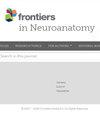Exploring an innovative decellularization protocol for porcine nerve grafts: a translational approach to peripheral nerve repair
IF 2.3
4区 医学
Q1 ANATOMY & MORPHOLOGY
引用次数: 0
Abstract
IntroductionPeripheral nerves are frequently affected by lesions caused by traumatic or iatrogenic damages, resulting in loss of motor and sensory function, crucial in orthopedic outcomes and with a significant impact on patients’ quality of life. Many strategies have been proposed over years to repair nerve injuries with substance loss, to achieve musculoskeletal reinnervation and functional recovery. Allograft have been tested as an alternative to the gold standard, the autograft technique, but nerves from donors frequently cause immunogenic response. For this reason, several studies are focusing to find the best way to decellularize nerves preserving either the extracellular matrix, either the basal lamina, as the key elements used by Schwann cells and axons during the regenerative process.MethodsThis study focuses on a novel decellularization protocol for porcine nerves, aimed at reducing immunogenicity while preserving essential elements like the extracellular matrix and basal lamina, vital for nerve regeneration. To investigate the efficacy of the decellularization protocol to remove immunogenic cellular components of the nerve tissue and to preserve the basal lamina and extracellular matrix, morphological analysis was performed through Masson’s Trichrome staining, immunofluorescence, high resolution light microscopy and transmission electron microscopy. Decellularized porcine nerve graft were then employed in vivo to repair a rat median nerve lesion. Morphological analysis was also used to study the ability of the porcine decellularized graft to support the nerve regeneration.Results and DiscussionThe decellularization method was effective in preparing porcine superficial peroneal nerves for grafting as evidenced by the removal of immunogenic components and preservation of the ECM. Morphological analysis demonstrated that four weeks after injury, regenerating fibers colonized the graft suggesting a promising use to repair severe nerve lesions. The idea of using a porcine nerve graft arises from a translational perspective. This approach offers a promising direction in the orthopedic field for nerve repair, especially in severe cases where conventional methods are limited.探索猪神经移植物的创新脱细胞方案:外周神经修复的转化方法
引言 周围神经经常受到外伤或先天性损伤引起的病变的影响,从而导致运动和感觉功能的丧失,这对骨科治疗效果至关重要,并对患者的生活质量产生重大影响。多年来,人们提出了许多策略来修复物质缺失的神经损伤,以实现肌肉骨骼神经再支配和功能恢复。异体移植已作为自体移植技术这一黄金标准的替代方法进行了测试,但来自供体的神经经常会引起免疫原性反应。因此,多项研究都在寻找神经脱细胞的最佳方法,以保留细胞外基质或基底层,因为它们是许旺细胞和轴突在再生过程中使用的关键元素。本研究重点关注猪神经的新型脱细胞方案,旨在降低免疫原性,同时保留细胞外基质和基底层等对神经再生至关重要的元素。为了研究脱细胞方案在去除神经组织中的免疫原性细胞成分以及保留基底层和细胞外基质方面的功效,我们通过马森三色染色、免疫荧光、高分辨率光学显微镜和透射电子显微镜进行了形态学分析。然后采用脱细胞猪神经移植物在体内修复大鼠正中神经损伤。结果与讨论脱细胞方法能有效地制备猪腓浅神经用于移植,这体现在免疫原性成分的去除和 ECM 的保留上。形态学分析表明,损伤四周后,再生纤维在移植物上定植,这表明该方法有望用于修复严重的神经损伤。使用猪神经移植物的想法源于转化的角度。这种方法为骨科领域的神经修复提供了一个前景广阔的方向,尤其是在传统方法受限的严重病例中。
本文章由计算机程序翻译,如有差异,请以英文原文为准。
求助全文
约1分钟内获得全文
求助全文
来源期刊

Frontiers in Neuroanatomy
ANATOMY & MORPHOLOGY-NEUROSCIENCES
CiteScore
4.70
自引率
3.40%
发文量
122
审稿时长
>12 weeks
期刊介绍:
Frontiers in Neuroanatomy publishes rigorously peer-reviewed research revealing important aspects of the anatomical organization of all nervous systems across all species. Specialty Chief Editor Javier DeFelipe at the Cajal Institute (CSIC) is supported by an outstanding Editorial Board of international experts. This multidisciplinary open-access journal is at the forefront of disseminating and communicating scientific knowledge and impactful discoveries to researchers, academics, clinicians and the public worldwide.
 求助内容:
求助内容: 应助结果提醒方式:
应助结果提醒方式:


